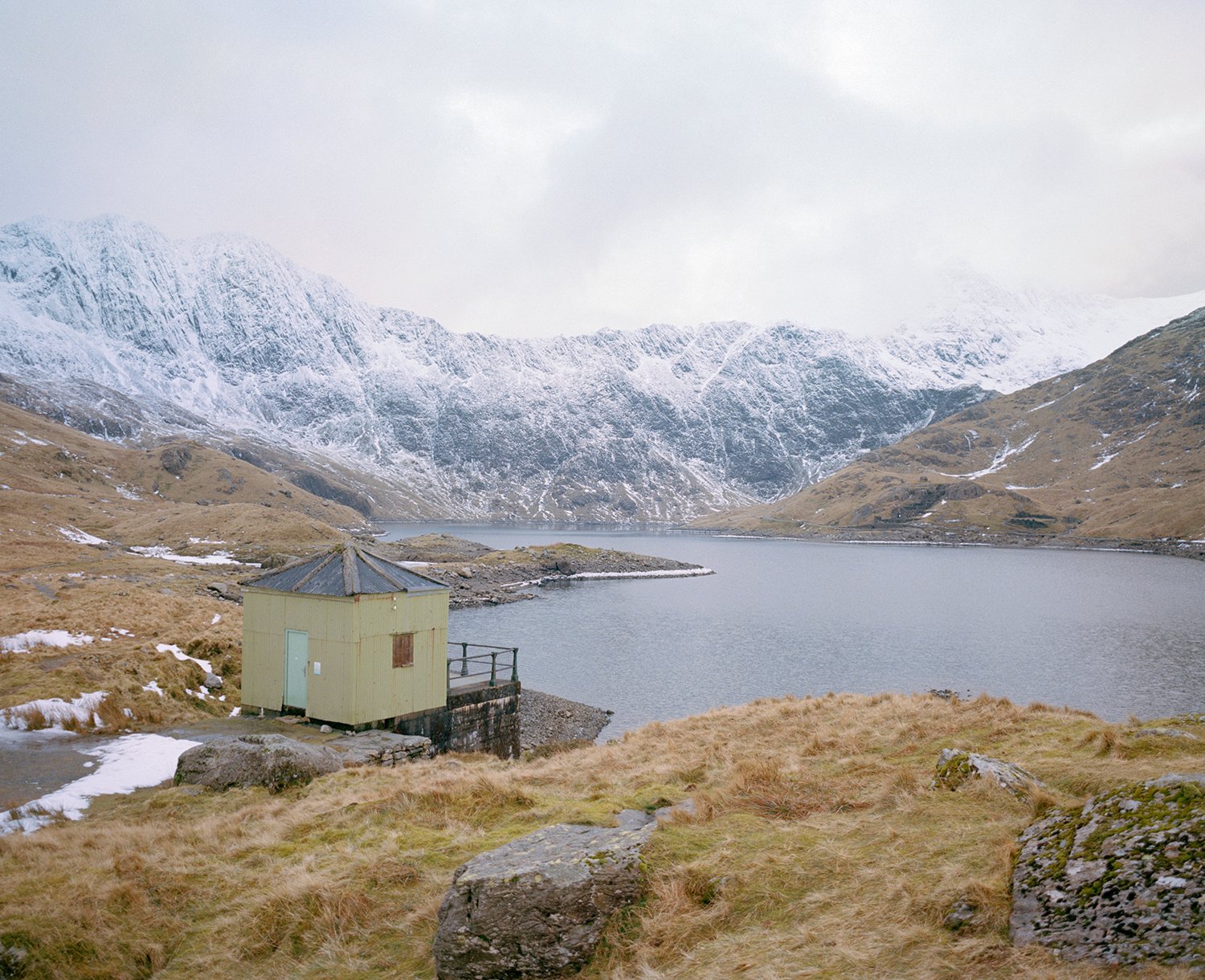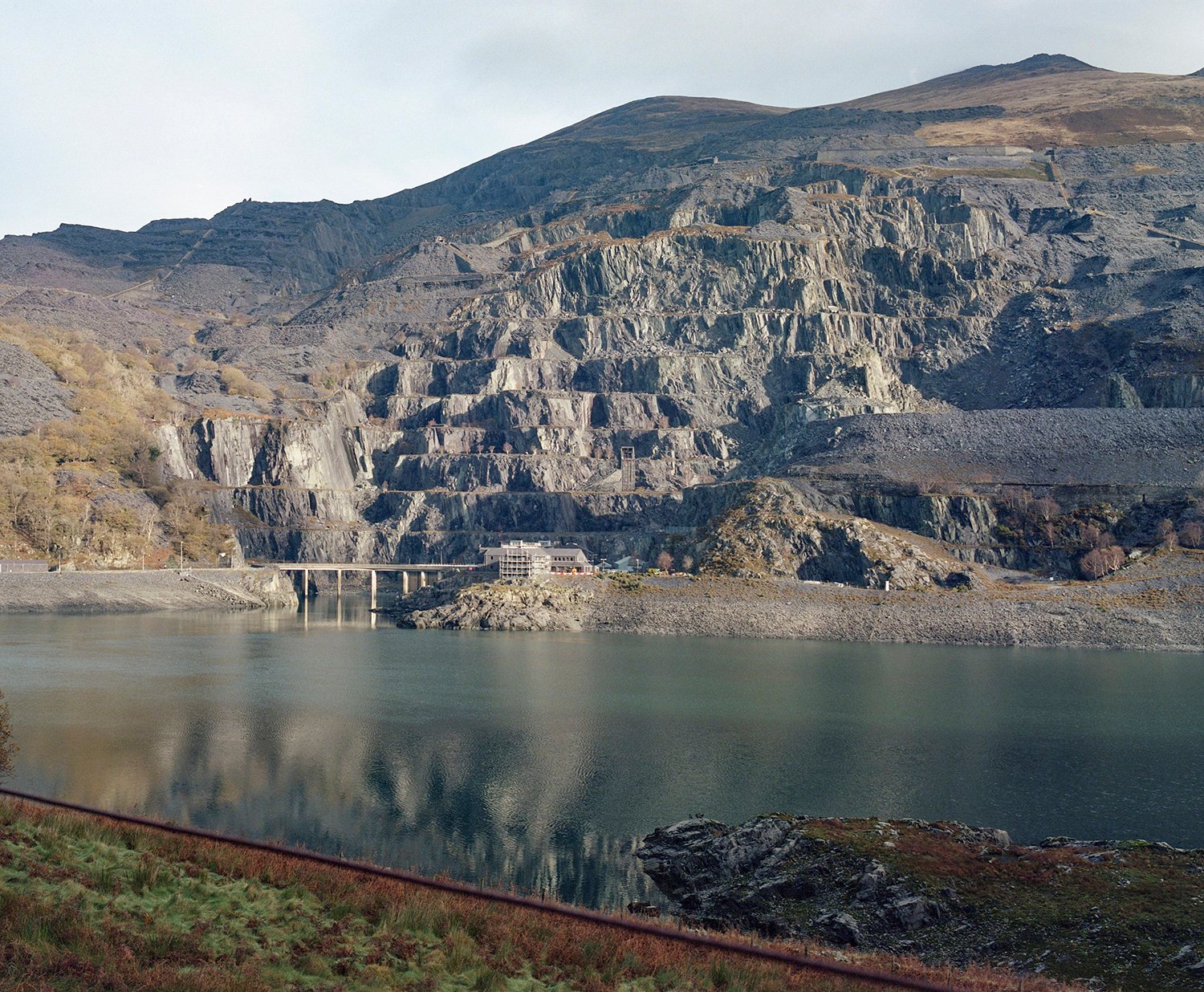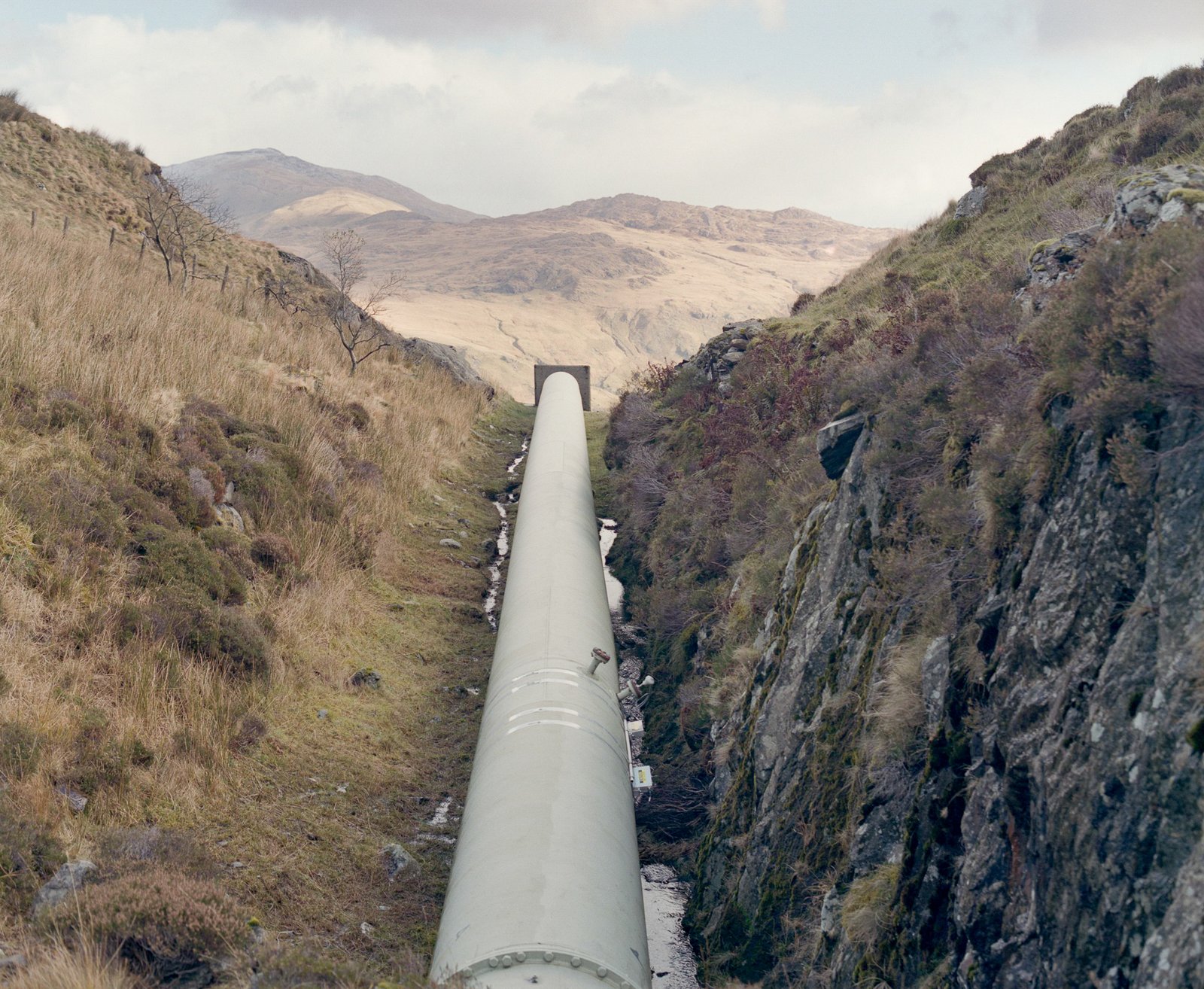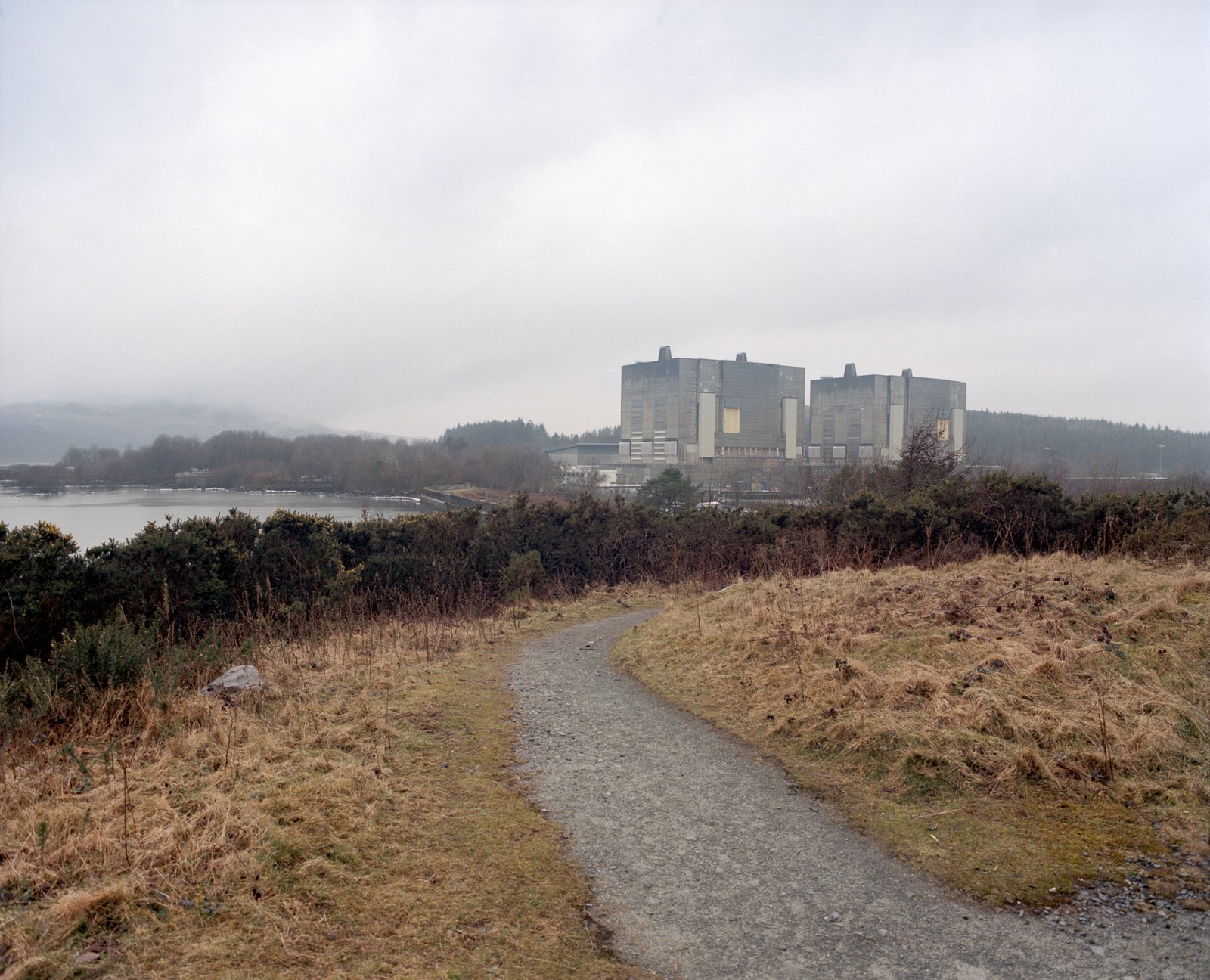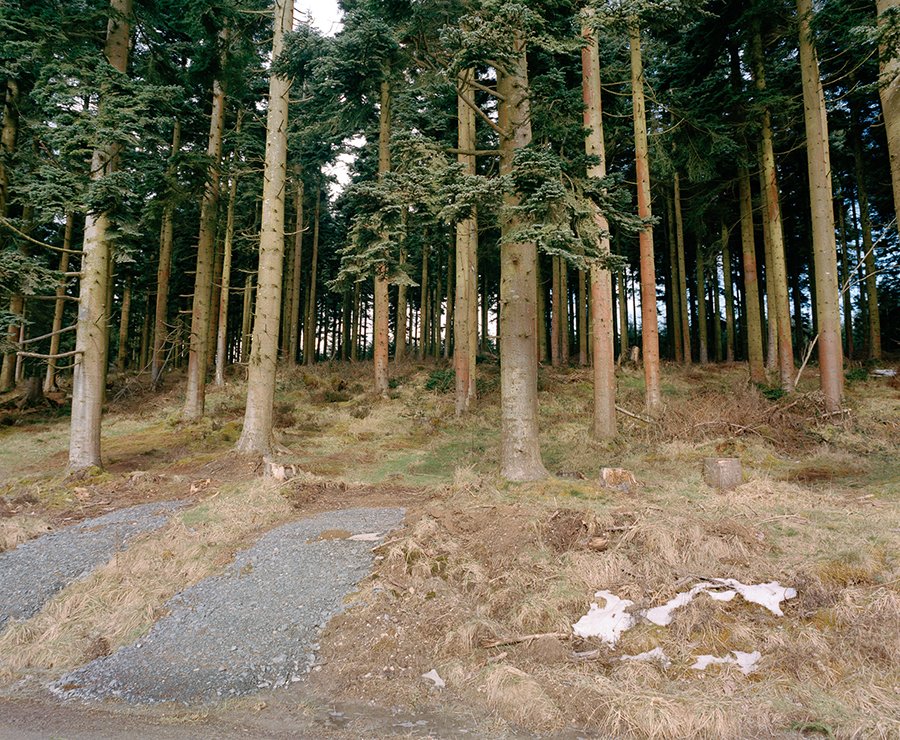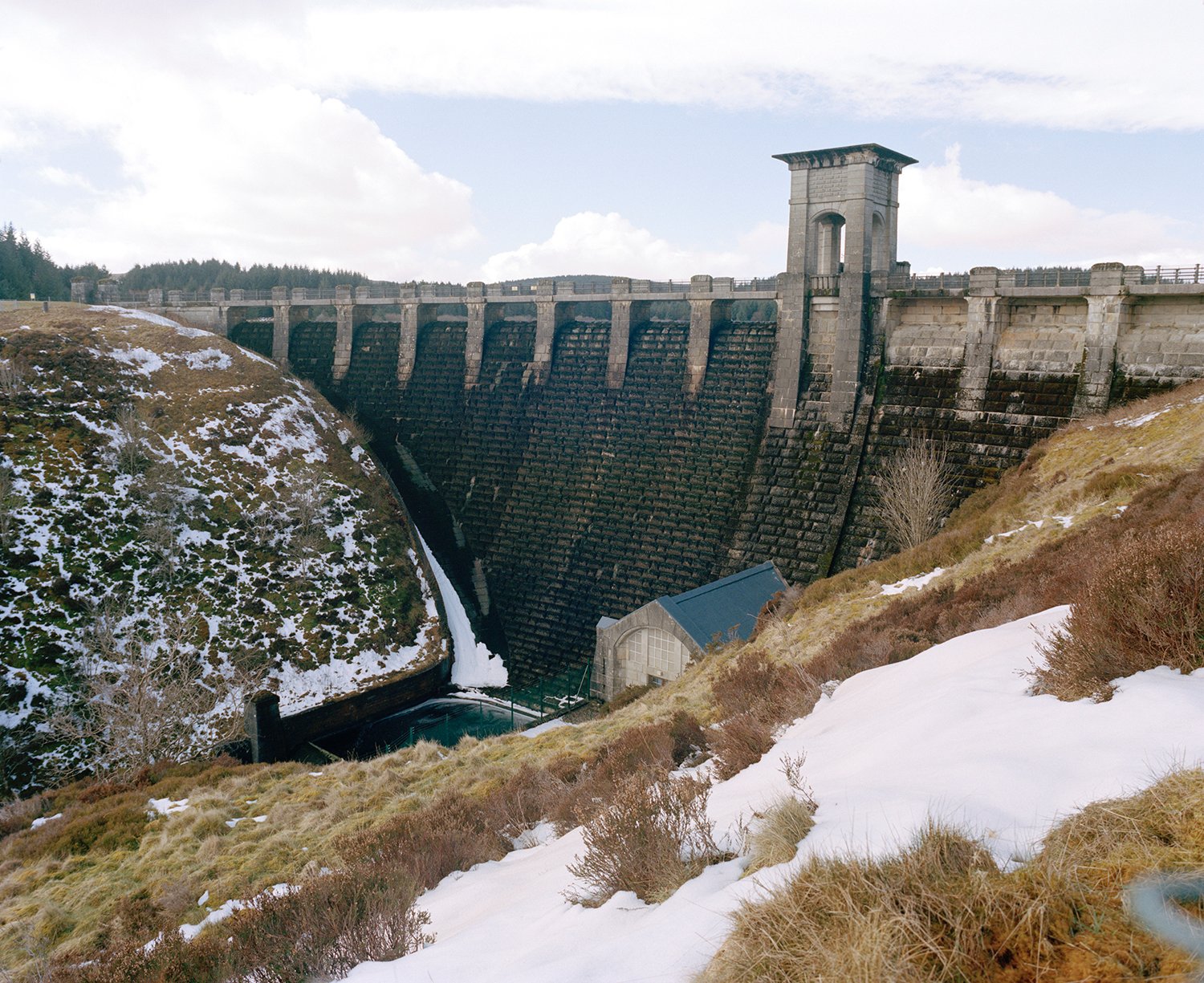Landscapes are seldom just an observation of environment. They’re much more than that: a common causeway between the viewer, the photographer and the place, space, or vista – however you want to call it. Landscapes are recognisable: they don’t require leaps in the imagination, and we take them at face value. The traditional landscape is recognised as untarnished pieces of nature: their beauty is seen through a rose-tinted window as untouched by man. A true landscape however – especially in heavily industrialised nations like the UK and within Europe – is a constant cultivation: from the dry-stone wall, to where domesticated animals chew, the mountainside trail and the rock fall defences, all are subtle changes to the lay of the land even if to some we are more oblivious and it goes unnoticed.
The brashness which oozes from modernity stands out more than any other change in the landscape and in Emma Stevenson’s Altered Lands this is recognised; it is a part of the symbiosis between humans and the natural environment. Rather than the industrial marks left upon Snowdonia national park being demonised, they sit uniquely as part of the beauty – a reflection of the areas heritage and future. Because of these sorts of measures Snowdonia possibly has a more unique beauty: the acceptance of its heritage as a part of its evolution. Most notable is probably the Dinorwig Slate Quarry; built during the 1700s, it is now seen as almost a part of the natural beauty of the area, though still an industrial hub as it acts as the façade for a hydroelectric power station. Most natural areas don’t get that level of attention to detail, as well as a unique opportunity in which something modern can hide behind something else due to the areas being completely and absolutely protected.
Shooting for the project comprised of driving from Westminster to Snowdonia (a five hundred mile round trip and circumnavigating Snowdon). The first trip acted as a fact finder allowing her to get a feel for the area (in November) as well as how to get to locations, returning again across March to revisit locations and lug an RB67 through snow and ice. The images themselves serve both as an exploration of the land and the impact we’ve had on it, as well as our relationship with the environment around us, especially our national parks; British summer holidays reside traditionally in areas just like Snowdonia. Stevenson herself spent many a summer holiday in Portmeirion (not at all far from Snowdonia itself) which has had a definite effect in the way that the image is created: the feeling of familiarity is evident through the softness, especially with images like ‘Alwen Forest’, which focuses entirely on only one patch of middle ground.
Most of the images, and undeniably the strongest, tend to be without one focal point: they don’t draw the eye to one single area, instead being careful to present an entire landscape, soft and flat – mesmerising with its size, and to an extent dystopian strangeness. As you become drawn into a world which is almost beyond belief and at once all too real, where power stations and modernism exist on mountainous hillsides within the boundaries of a national park. As Stevenson says, ‘texture is an ongoing theme in a lot of my work’, and it shows. It’s easy to get lost within an image, precisely because it doesn’t contain that need for one central focal point and allows you to put yourself there, surrounded by this flat landscape. Negative space is a balancing act, always caught between having too much and too little. Too much and the image feels lifeless, devoid of any true connection; too little and the image has far too much, and doesn’t allow the viewer space to take it in or understand it. In images like Lake Lydlaw, where snow-capped mountains form a hazy background and a small, almost out of place building takes up the foreground, Stevenson has seemingly found a near perfect balance of the two: with enough going on that it’s engaging, but not too much that it becomes an onslaught on the eyes.
As is probably familiar to most, the preliminary research for the locations was done through Google Maps and Wikipedia – they’re always a hive of knowledge and a brilliant way to set out initial plans of where to shoot, but especially what to be looking out for. Having circumnavigated Snowdon five times (though never having made it to the very peak), Stevenson planned routes around the mountain which would encompass the spots she was after, though shooting through the winter can be a bit of a catch 22. It allows the incredible breath-taking vistas: lonely mountain tops deserted, muted tones through grey skies and that crunchy sharpness from snow atop rocks, although the most important factor is the lack of a physical human presence. If this project was set in summer the colourful dots, antlike as they crawl up the rocks, would turn it into something altogether more social, and take away from the nuanced way in which the environment changes and is being affected. The flip side of the coin, of course, is that the weather is much more changeable, smitten with icy winds and hostile roads, sometimes closed after heavy snowfall.
Shooting roughly fifteen rolls of medium format for the project, she chose to use Kodak Portra to allow for a much flatter, muted image that is much more subtle in the direction. It doesn’t quite go to the lengths of being as faded as seems to be in vogue right now, but creates landscapes which do not conform to the usual rules: over extenuated greens, focusing on the traditional ‘beauty of nature’. This tonal range instead seems to uses something far more New Topographics-eque, seeing nature as an extension of man’s treatment of the land – it heavily reflects the drab concrete greys and reddish rust browns present in cities, industrial areas, and as she has used them here in a more abstract form – our landscapes. This muted, realistic tone is as close as you can get to the classical black and white look of ‘art’ photography, whilst still having your images read within a more modern context, freed from the need of the classical definition of beauty.
Altered Lands is one of those projects which takes something very familiar: the British countryside – and seems to take away those all too well-known identifying points when we read a landscape: wilderness, solidarity and escapism. It seems to somehow distort it instead into another world: by no means is it a vision of the future, with the modernist-grey structures, and neither is it a vision of the past. It is, as it defines itself, a reflection of the constant evolution of our natural world – which does, unavoidably, carry a human footprint whether we like it or not, or even see it in the landscape that surrounds us.
